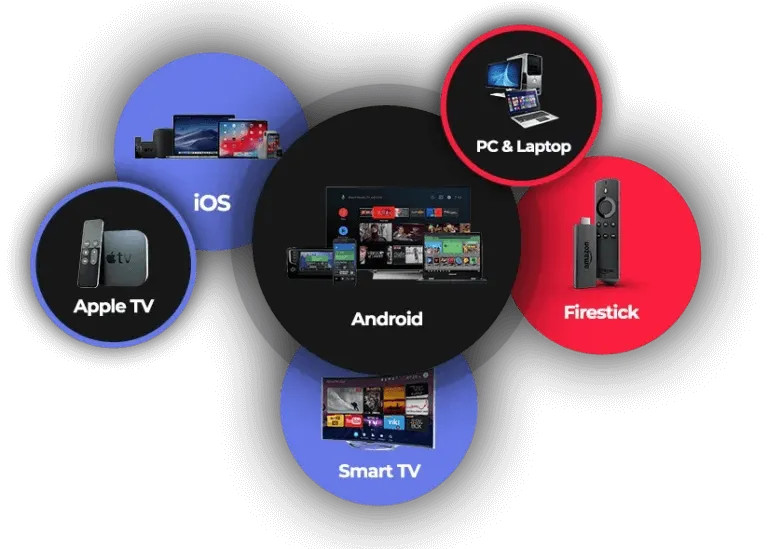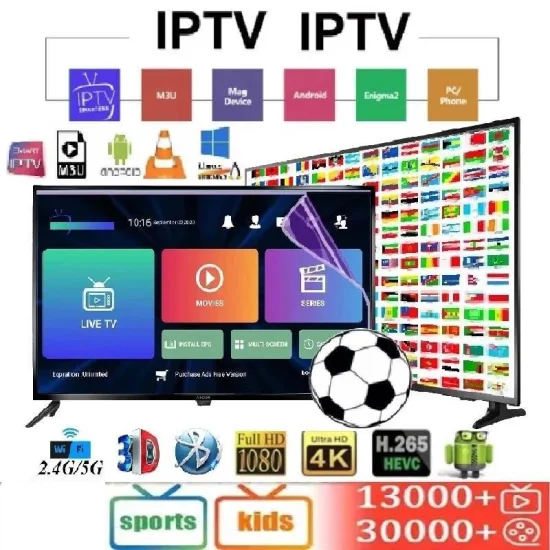Get Instant Gain Access To: IPTV Subscription for Your Favorite Shows and Films
Get Instant Gain Access To: IPTV Subscription for Your Favorite Shows and Films
Blog Article
How IPTV Works: A Step-by-Step Overview to Web Method Television Modern Technology
Net Procedure Tv (IPTV) has changed the method we eat television web content, supplying a new world of possibilities with the power of the net. Recognizing the complexities of just how IPTV works can drop light on the modern technology that drives this innovative kind of media delivery. From the essential concepts of IPTV to the complex process of material shipment, each step plays a crucial function in making certain a smooth viewing experience. In this guide, we will certainly reveal the underlying systems that make IPTV an interesting blend of modern technology and amusement.
IPTV Basics
In recognizing IPTV essentials, it is critical to comprehend the basic workings of this technology in supplying tv material online. IPTV, which means Web Protocol Television, utilizes Net Method (IP) networks to send television material to users' gadgets. Unlike conventional methods of broadcasting tv web content through cable television or satellite signals, IPTV streams media through high-speed net links.

Moreover, IPTV enables interactive capacities, such as video on demand (VOD) and digital program guides (EPG), enhancing the customer experience by providing even more control and adaptability in accessing material. Overall, recognizing the fundamentals of IPTV sets the foundation for discovering its advanced performances and the benefits it supplies to contemporary television intake.
Content Distribution Process
Efficient material delivery in IPTV systems includes a well-structured process that guarantees seamless transmission of tv content over IP networks. The material shipment process in IPTV begins with the production of the video web content, which is then encoded into digital layout suitable for IP transmission.

Middleware Performance
With the combination of middleware, IPTV systems gain improved functionality that streamlines user communication site here and web content administration. Middleware works as an essential component that links the void between the user interface and the back-end infrastructure, facilitating smooth communication and interaction within the IPTV system. One of the essential features of middleware in IPTV is to allow customized user experiences by giving functions such as interactive program guides, video-on-demand services, interactive advertising, and customer preferences monitoring. By streamlining these performances with middleware, company can use a more vibrant and tailored IPTV experience to their subscribers.
Tool Compatibility
Offered the crucial duty of middleware in making it possible for smooth communication and content administration in IPTV systems, a critical facet to consider is the compatibility of gadgets utilized for accessing the IPTV solutions. Tool compatibility is essential for ensuring a smooth customer experience and optimum efficiency when accessing IPTV content.
In the context of IPTV, device compatibility describes the capacity of a gadget to efficiently interact with the IPTV solution, present material properly, and sustain the necessary protocols and codecs for streaming video clip content over the web. Different devices, such as clever TVs, set-top boxes, smartphones, tablet computers, and computers, may have differing levels of compatibility with IPTV services.
To make certain a seamless viewing experience, it is very important for customers to select devices that work with the specific IPTV solution they are utilizing. In addition, IPTV company need to provide support for a wide variety of tools to deal with the varied needs of their customer base. By prioritizing tool compatibility, both users and company can improve the overall IPTV experience.
Quality of Service (QoS)
Considering the essential role of keeping a high criterion of performance and integrity in IPTV systems, guaranteeing regular Quality of Solution (QoS) continues to be a fundamental element of the user experience. QoS in IPTV refers to the capacity of the system to supply content with very little disruptions, high resolution, and fast filling times. To achieve optimal QoS, different variables need to be attended to. Network data transfer is crucial to support high-grade video streaming without buffering or pixelation. Furthermore, latency, jitter, and package loss have to be reduced to boost the viewing experience.
Provider employ QoS mechanisms our website such as traffic prioritization, buffering, and mistake improvement to preserve a steady IPTV service. By focusing on IPTV traffic over much less time-sensitive data, companies can make sure smooth playback even throughout optimal usage hours. Buffering helps make up for network fluctuations, while error correction techniques improve data stability.
Continuous monitoring and optimization of QoS criteria are necessary to adjust to altering network conditions and individual demands. Eventually, a durable QoS structure is important for supplying a smooth and delightful IPTV experience to customers.
Conclusion
In verdict, IPTV operates via the transmission of television web content over net protocol networks. Top quality of look at here now Service plays an essential function in keeping the efficiency and integrity of IPTV services - IPTV subscription.
Report this page